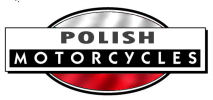





Overview
Manufactured 1938-1970
Founded in 1919 in Kielce, motorcycle production began in 1938 using Villiers 98cc engines built under licence.
The machine was a success and plans were afoot for larger capacity models and export abroad when war came. The contents of the factory were stolen by the Nazis, including all plans. Despite this, production was resumed post-war.
SHL Models include:
SHL India
The SHL 175 M11 was produced in India by the ESCORTS company under the name "Rajdoot". Several models were offered beginning in 1962 including the Rajdoot Electronic with CDI ignition, the 175 GTS minibike (173cc engine, Earles forks, solid wheels and a spare) and the earlier Ranger with an MZ style fuel tank. Over 1.5 million Soviet-style machines were built, according to Wikipedia. The company also built Yamaha RD350 and RX100-based machines under licence. Yamaha bought the Escorts motorcycle division in 2001.
SHL History
The Kielce Voivodship has been the cradle of the Polish metal industry since ancient times. Already in the chronicle of Jan Dlugosz we find evidence of the industrialization of this part of the country. The Kielce region was taken care of by outstanding economic reformers - Stanislaw Staszyc and Prince Ksawery Drucki - Lubecki, and by the Polish Bank, which financed the first attempts to create heavy industry.
One of the younger plants in this region was Huta Ludwików. In 1894, Ludwik Starke founded iron foundries in an old mill in Suchedoniów, gradually transformed into a factory of agricultural machinery, sanitary equipment, sewage and water pipes, cast iron pots, etc. In 1913, the construction of a branch of the factory began in Kielce, which - as a result of warfare - was completed only 8 years later. Private capital gave way to Bank Gospodarstwa Krajowego relatively early, which took over the equity portfolio. Soon, the steelworks became part of the ?Huta room? Slaskie Zaklady Górniczo-Hutnicze SA in Katowice, while the significantly expanded plant in Kielce (in 1937, approx. 2,000 employees) took over the name of Huta Ludwików (joint-stock company) and dominated the plant in Suchedniów.
In 1938, the management of the concern decided, in addition to a wide range of products, especially for railways and the army, to also produce motorcycles. Eng. Otmar Kwiecinski, general director of Huta Ludwików. With his support, Eng. Rafal Ekielski developed a lightweight motorcycle design, equipped with an engine of foreign origin.
It should be added here that Eng. Ekielski, who had been working at the steelworks since 1936, already had a creative output in this field in the form of the Orla 350 motorcycle, built in Krakow three years earlier. Preparatory work began with the selection of the type of chassis. In a short time, several frames were built - double, closed, made of steel elements with a C-profile. They were characterized by a cast head, connected to the sections with screws. Adjustable bearings are placed in the head, tapered roller bearings. This solution made it possible to easily adjust the clearances. The front suspension was a construction typical for this period - there was a trapezoidal fork pressed from pressed metal, sprung by a central spring and equipped with a friction shock absorber with adjustable force.
In the initial period of production, however, there were some technological difficulties (cracking of the frame beams, especially the diagonal ones, was observed), resulting from, among others, from a different way of making the load-bearing elements of the chassis. Jawa had steel sections with a U-shaped profile, characterized by a large cross-sectional radius and rounded corners, while in the Polish chassis, the cross-sectional area of the frame beams had a much smaller radius and a shape similar to a rectangle.
In the second half of 1938, a license agreement was concluded with Villiers Motor Co. Ltd. in Wolverhampton, a well-known manufacturer of engines and motorcycles. As a result of the agreement, the British company granted Huta Ludwików permission to manufacture single-cylinder two-stroke engines with a capacity of 98 cc and power of 3 hp, with a 3-speed gearbox, provided them with technical documentation and started the delivery of machines and manufacturing equipment. It is worth noting that about 80% of the machine tools for engine production came from this source. It made a significant contribution to the industrial potential of the plant.
Initially, complete engines were imported; however, as domestic components grew, only components were imported for which local production had not yet developed. In the late spring of 1939, over 40% of the engine components (including cylinders) were manufactured at the steelworks.
Motorcycles from the first series (roughly until the end of March 1939) were equipped with Villiers headlights with integral switch; later models had lamps from the Warsaw factory "A. Marciniak" SA, and the light switch was mounted on the handlebars. In the housing of the headlight (both types) or in the toolbox, a replaceable dry battery was placed, designed to power the parking lights when the engine was switched off. The vehicles also use a slightly anachronistic, characteristic of Villiers, carburetor throttle control system with a sliding lever mounted on the handlebar on the right side.
After thorough and long-term prototype tests of vehicles, the information series of SHL motorcycles (short for the name "Setki (Hundred) of Huty Ludwików") was published in December 1938, and at the same time further intensive development of production was announced and, as it grew, the establishment of factory depots (representative offices) in larger Polish cities. The price of the vehicle was set at PLN 898, so it is unsurprising that this inexpensive domestic motorcycle was in great demand. In order to at least partially meet the expectations of customers from the southern region, the factory entrusted (in March 1939) retail sales in Kielce to the Cooperative of Workers of Huta Ludwików SA, which opened two specialized retail outlets selling in cash and in installments. Before the outbreak of World War II, representative offices were organized in only a few Polish cities, the largest of which existed in the capital.
The production program for 1939, established at a conference of representatives of the domestic motorcycle industry in Warsaw at the beginning of that year, provided for the launch of 2000 SHL with a 98 cc engine . Reportedly, tests were also carried out with a motorcycle equipped with a larger capacity engine (200 cc), also of Villiers design.
It should be assumed that by September 1939 several hundred vehicles (maybe 800 - 1000) got into the hands of buyers. The wartime September dealt a heavy blow to the factories - the Nazi invader immediately after entering Kielce took all the equipment for the production of a motorcycle to the Reich, including 40 brand new English machine tools, not yet removed from the crates, and the entire license documentation. The real tragedy of the steelworks, however, was the year 1944 - the Germans, having time for the planned "evacuation", took over 1,300 wagons of machinery and materials, leaving not even the proverbial nail.
The SHL were strong and durable vehicles, but these undoubted advantages came at the cost of heavy weight. The ready-to-ride weight of the motorcycle was 78 kg, which was the maximum for this category. Their maximum speed was not sensational, however, maintaining - with a load of two people - traveling speeds of 45 - 50 km/h was quite possible. When riding with two people, however, it was necessary to remember that the driver of the motorcycle had a driving license (Setki riders were exempt from this obligation when solo) and - as recommended by the manufacturer - not to overload the engine.
The vehicle was well suited for long journeys as the 9 litre fuel tank allowed up to 400 kilometers before refueling. For the rider's convenience, a measuring cup was built into the fuel filler cap to determine a correct amount of two-stroke of oil.
SHL was presented to the public, among others at the Poznan International Fair in the spring of 1939, where they aroused recognition with their solid performance. Already from March of that year, they also took part in sports events, where they achieved points. It is worth mentioning here the third place of Jan Ripper from Krakow, an excellent rally and racing car driver, winning in the 3rd "Meeting of Hundreds", organized by the leading Polish motorcycle club - Poznan's "Unie".
Sources:
Fri, 29 Sep 2017
omar.khalil87 at gmail.com
SHL M11 1965
Dear Sir I Required SHL M11 Motorcycle spare parts following are 1-Tail light 2-Carbrotator 3-Central stand 4-Complete head light Please send me inquiry Thanks &Regards Omar Khalil
Omar Khalil
Karachi Pakistan
Sun, 20 Feb 2005
Polish motorcycles
bogumil_dreliszak at o2.pl
My name is Bogumil, I'm from Poland. As I was surfing through the web I found your website. I have to say that I'm very impressed. You gathered quite big amount of motorcycles from all around the world. Of course mostly I was interested in Polish motorcycles and I was really happy to find them. I'm riding a MZ ETZ 251 from 1990. Answering your question about any other Polish motorcycles, I think I can help you. There were many other Polish motorcycles. I don't know If you're interested in extending your web site. For example SHL as a factory produced many different models like M06, M05 and many cross motorbikes . The same is with JUNAK ( M 07, and B20 which was a three wheeled transport motorbike - very interesting). If you're interested give me a note. As I study I don't have a lot of time, but I will do my best to send you as many information as it will be possible.
SHL M11
This is the first Polish motorcycle with a capacity of 175 cm3. Equipped with a two-stroke engine S-32 of 9-hp and three-speed gearbox ane weighing 115 kg, with a maximum speed of 90 km/h. Produced in 1961-1968 in KZWM Polmo-SHL in Kielce (Close to Krakow)
SHL-1961-M11-Poland.jpg posted to gallery.
If you have a query or information about SHL motorcycles please contact us